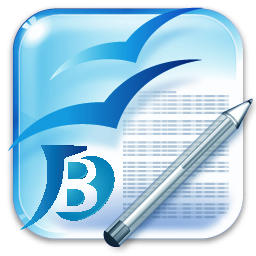The implementation of peer assessment in product performance assessment in project-based learning on ecosystem materials
Abstract
The teacher's difficulty in assessing student performance when students work in groups outside class hours causes the need for peer assessment to be carried out. Project-based learning is a suitable space for applying peer assessment because it consists of tasks that students in groups usually do. This study describes the application of peer assessment in product performance assessment in project-based learning on ecosystem materials. This study uses a descriptive method involving 34 high school students in class X. Peer assessment is done by students assessing the products made by their group of friends. The application of peer assessment in this study was carried out three times, namely at the stage of product design, product assessment, and product presentation. An analysis of the performance assessment results through peer assessment is conducted, and the similarity of the results of the peer assessment to the teacher's assessment at each stage. The study results showed that there was a tendency for an increasing student's ability to judge. This result is evidenced by the increasing similarity of teacher assessments and peer assessments at each stage. The similarity between peer assessment and teacher assessment at the product design stage is 58.8%; product assessment stage by 64.7%; and the product presentation stage of 70.6%. The student response questionnaire identified that the application of peer assessment provided many benefits to students. Based on the results of this study, peer assessment can be an alternative in overcoming teachers' difficulties in assessing student performance when project work is carried out outside class hours through project-based learning.
Keywords
Full Text:
PDFReferences
Adams, J. D., & Mabusela, M. S. (2017). Quality assignments: Exploring the use of peer assessment. Journal of Social Sciences, 42(1-2), 89-96. https://doi.org/10.1080/09718923.2015.11893397
Arikunto. (2010). Prosedur penelitian: Suatu pendekatan praktek. Rineka Cipta.
Azhar, F. (2015). Perceptions on Project-Based assessment rubrics: A rubric design for Indonesian school contexts. Mediterranean Journal of Social Sciences. https://doi.org/10.5901/mjss.2015.v6n4s3p463
Badan Standar Nasional Pendidikan. (2010). Paradigma pendidikan nasional abad XXI. Badan Standar Nasional Pendidikan.
Boss, S., Larmer, J., & Mergendoller, J. (2013). PBL 21st Century success: Teaching critical thinking, Collaboration, Communication, and Creativity. Buck Institute for Education.
Bostock, S. (2000). Student peer assessment. Learning Technology, 5(1). https://www.reading.ac.uk/web/files/engageinassessment/Student_peer_assessment_-_Stephen_Bostock.pdf
De Grez, L., Valcke, M., & Roozen, I. (2012). How effective are self- and peer assessment of oral presentation skills compared with teachers assessments? Active Learning in Higher Education, 13(2), 129-142. https://doi.org/10.1177/1469787412441284
Eshun, E. F., Korwu, P., & Appiah, E. (2018). Peer assessment in graphic design studio: Communication design students' perspectives. Journal of Science and Technology (Ghana), 37(1), 64-74. https://doi.org/10.4314/just.v37i1.6
Forest Lake Elementary. (2010). Diorama rubrics. https://backend.edutopia.org/sites/default/files/pdfs/stw/edutopia-stw-s.carolina-differentiated-instruc-landforms-diorama-rubric.pdf
Freeman, M. (1995). Peer Assessment by Groups of Group Work. Assessment & Evaluation in Higher Education, 20(3), 289-300. https://doi.org/10.1080/0260293950200305
Gielen, S., Peeters, E., Dochy, F., Onghena, P., & Struyven, K. (2010). Improving the effectiveness of peer feedback for learning. Learning and Instruction, 20(4), 304-315. https://doi.org/10.1016/j.learninstruc.2009.08.007
Grossman, P., Dean, C. G. P., Kavanagh, S. S., & Herrmann, Z. (2019). Preparing teachers for project-based teaching. In (Vol. 100, pp. 43-48): Kappan.
Hafernik, J. J., & Wiant, F. M. (2012). Integrating multilingual students into college classrooms. Multilingual Matters. https://doi.org/10.21832/9781847698216
Kartono, K. (2011). Efektivitas penilaian diri dan teman sejawat untuk penilaian formatif dan sumatif pada pembelajaran mata kuliah analisis kompleks. Seminar Nasional Matematika, Surakarta.
Langan, A. M., Shuker, D. M., Cullen, W. R., Penney, D., Preziosi, R. F., & Wheater, C. P. (2008). Relationships between student characteristics and self, peer and tutor evaluations of oral presentations. Assessment & Evaluation in Higher Education, 33(2), 179-190. https://doi.org/10.1080/02602930701292498
Li, Z., Zhao, Z., Xin, S., & Wang, Y. (2020). The barriers in organizing fieldwork-based learning trips in China: The tourism academics perspective. Journal of Hospitality, Leisure, Sport & Tourism Education, 26, 100240-100240. https://doi.org/10.1016/j.jhlste.2020.100240
Lie, L. Y., & Angelique, L. (2003). Implementing effective peer assessment. In.
Lpez-Pastor, V., & Sicilia-Camacho, A. (2015). Formative and shared assessment in higher education. Lessons learned and challenges for the future. Assessment & Evaluation in Higher Education, 42(1), 77-97. https://doi.org/10.1080/02602938.2015.1083535
P21. (2010). Assessment: A 21st Century Skills Implementation Guide. www.p21.org
Planas Llad, A., Soley, L. F., Fraguell Sansbell, R. M., Pujolras, G. A., Planella, J. P., Roura-Pascual, N., Suñol Martnez, J. J., & Moreno, L.
M. (2013). Student perceptions of peer assessment: an interdisciplinary study. Assessment & Evaluation in Higher Education, 39(5), 592-610. https://doi.org/10.1080/02602938.2013.860077
Purwanto, N. (2012). Prinsip-prinsip dan teknik evaluasi pembelajaran. Remaja Rosdakarya.
Seifert, T., & Feliks, O. (2018). Online self-assessment and peer-assessment as a tool to enhance student-teachers assessment skills. Assessment & Evaluation in Higher Education, 44(2), 169-185. https://doi.org/10.1080/02602938.2018.1487023
Spiller, D. (2012). Assesment matters self assesment and peer assesment. The University of Waikato.
Sriyati, S., Permana, A., Arini, A., & Purnamasari, M. (2016). Efektivitas peer assessment dalam menilai kemampuan kinerja siswa pada kegiatan praktikum biologi. Proceeding Biology Education Conference: Biology, Science, Enviromental, and Learning, Surakarta.
Sudijono, A. (2007). Pengantar evaluasi pendidikan. Raja Grafindo Persada.
Suol, J. J., Arbat, G., Pujol, J., Feliu, L., Fraguell, R. M., & Planas-Llad, A. (2015). Peer and self-assessment applied to oral presentations from a multidisciplinary perspective. Assessment & Evaluation in Higher Education, 41(4), 622-637. https://doi.org/10.1080/02602938.2015.1037720
Talat, A., & Chaudhry, H. F. (2014). The effect of PBL and 21st century skills on students' creativity and competitiveness in private schools. The Lahore Journal of Business, 2(2), 89-114. http://lahoreschoolofeconomics.edu.pk/businessjournals/V2issue2/05%20Talat%20and%20Chaudhry%20FINAL.pdf
Topping, K. J. (2009). Peer Assessment. Theory Into Practice, 48(1), 20-27. https://doi.org/10.1080/00405840802577569
Torres-Guijarro, S., & Bengoechea, M. (2016). Gender differential in self-assessment: a fact neglected in higher education peer and self-assessment techniques. Higher Education Research & Development, 36(5), 1072-1084. https://doi.org/10.1080/07294360.2016.1264372
Trilling, B., & Fadel, C. (2009). 21st century skills: Learning for live in our times. Wiley.
Wang, W. (2016). Using rubrics in student self-assessment: student perceptions in the English as a foreign language writing context. Assessment & Evaluation in Higher Education, 42(8), 1280-1292. https://doi.org/10.1080/02602938.2016.1261993
Wanner, T., & Palmer, E. (2018). Formative self-and peer assessment for improved student learning: the crucial factors of design, teacher participation and feedback. Assessment & Evaluation in Higher Education, 43(7), 1032-1047. https://doi.org/10.1080/02602938.2018.1427698
Weaver, D., & Esposto, A. (2012). Peer assessment as a method of improving student engagement. Assessment & Evaluation in Higher Education, 37(7), 805-816. https://doi.org/10.1080/02602938.2011.576309
DOI: http://dx.doi.org/10.26555/bioedukatika.v9i3.18944
Refbacks
- There are currently no refbacks.

This work is licensed under a Creative Commons Attribution-ShareAlike 4.0 International License.
JURNAL BIOEDUKATIKA
ISSN 2338-6630 (Print) | ISSN 2541-5646 (Online)
Organized by Department of Biology Education
Published by Universitas Ahmad Dahlan
Jl.Ringroad Selatan, dk Kragilan, Tamanan, Banguntapan, Bantul, Daerah Istimewa Yogyakarta, Indonesia







